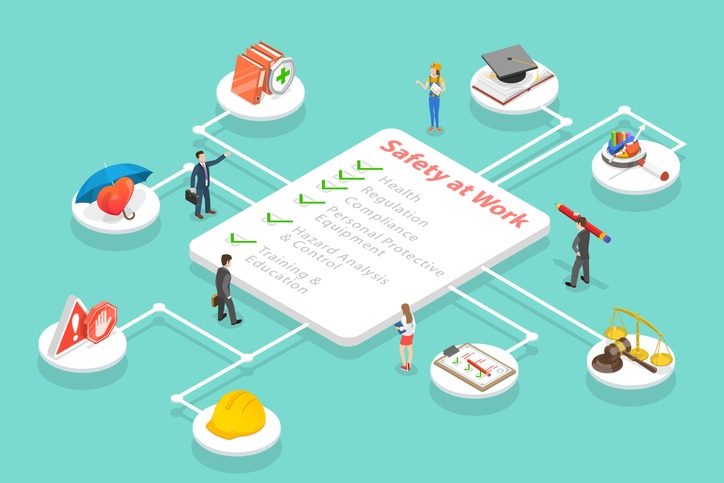
Andrew Blench, SBM consultant with School Business Partner Limited, explains the ins and outs of PPM and what SBMs need to know
Read the full article below or on page 20 in our Summer magazine
Planned Preventative Maintenance, or PPM for short, is part of the school business professional’s remit and, when working well, it ensures that the school estate meets its statutory health and safety obligations. It also ensures that the physical infrastructure and assets of the school are working effectively and efficiently. In the same way that servicing and conducting minor repairs on our cars extends their life and saves on more expensive repair bills due to neglect, PPM works in a similar way.
PPM also has a link with sustainability. Equipment and assets that use electricity and gas, when not maintained effectively, can start to use more energy, therefore being responsible for more CO2 emissions than necessary.
Here is a common definition of PPM
Planned preventative maintenance (PPM), also commonly referred to as planned or scheduled maintenance, is essentially a scheduled maintenance routine, set out to ensure machinery, services and equipment are all maintained at regular intervals.
This helps to minimise partial or complete failure, and thus minimise business interruption and prepare your business to avoid any costly disasters.
What are our obligations in respect of PPM?
Many of the obligations are detailed in legislation, regulations, and codes of practice. There is some good guidance on this on the DfE website in the ‘Good estate management for schools’ section, or GEMS for short. There is also a wealth of information on the Health and Safety Executive website.
I am going to mention a few key responsibilities below in terms of PPM. Please note that this is not an exhaustive list, and you would need to use your knowledge of your own school site to develop your own list.
Equipment
Provision and Use of Work Equipment Regulations 1998 (PUWER)
These place obligations upon employers in relation to work equipment and are wide ranging. They cover installation, training, maintenance, inspection, risk assessment and more.
The definition of equipment from HSE is – “Work equipment is any machinery, appliance, apparatus, tool or installation for use at work (whether exclusively or not). This includes equipment which employees provide for their own use at work.”
The scope of work equipment is therefore extremely wide. The use of work equipment is also very widely interpreted and “…means any activity involving work equipment and includes starting, stopping, programming, setting, transporting, repairing, modifying, maintaining, servicing and cleaning.”
This might sound very industrial and not much to do with schools, but in my experience and especially in secondary settings it covers a lot of what we do. It is particularly relevant in CDT and science labs where we will have pieces of equipment and apparatus such as lathes, drills, Bunsen burners, fume cupboards. What about the site team and what equipment do they use?
Fire Safety System
Regulatory Reform (Fire Safety) Order (2005)
This places a whole range of responsibilities with the responsible person in terms of the school estate. In terms of PPM, it covers aspects such as regular servicing, testing and repairs to the fire alarm system. Inspect and servicing of fire extinguishers and fire blankets. Emergency lighting testing and repairs.
Asbestos Management
Control of asbestos regulations (2012)
This is a vast subject, but in terms of PPM, what systems do you have in place for the regular inspection of existing asbestos (assuming that your asbestos management plan has determined that this can remain in place and be managed). Our school building gets some hammer and what might be fine on one inspection could become what is called friable on the next. What systems do you have in place for refreshing your asbestos register? When was your last survey completed?
Legionella
Control of substances hazardous to health COSHH (2002)
Legionella is a bacterium which can build up in water systems. Once ingested can lead to the development of legionella disease which, in certain cases, can be fatal. PPM in this respect prevents the build-up of bacteria and identifies risks in the water management system. There should be a PPM system in place including regular water temperature checks, flushing of shower heads, regular risk assessments and inspection of the whole water system.
Other areas where I would expect to see a regime of PPM, including testing, inspection and regular servicing are as follows:
Catering equipment, tree surveys, electrical testing (fixed installation and portable appliances PAT), gas inspection servicing and safety certification, air conditioning, air circulation, local exhaust ventilation (LEV) such as used in labs or CDT, playground, and gym equipment.
Again, this list is not exhaustive and needs to be developed with your context in mind. So, for example if you are a special school, it is likely that you will have equipment in place which other settings won’t have. Lifts and hoist for example which need regular servicing and inspection.
Premises maintenance policy and log
In my experience it’s very easy for things to fall behind or get overlooked in terms of PPM, especially across a large school estate. Having a premises maintenance policy and log is a great help. This would detail roles and responsibilities and also give a breakdown of the main areas of PPM and how these are going to be approached. There are some great templates available to create your own policy available from the usual websites.
For peace of mind, I would also create a service/testing log. This would detail what needs servicing/testing, frequency of testing, date last completed, date due for next test, and the organisation or person responsible for completion. This would be a live document which would be updated over the year.
For SBMs working in a PFI building this will be held by the PFI company, but I would insist on receiving updates from the PFI company for your own peace of mind. In other settings, the creation and maintenance of the log may sit with an external facilities management company or facilities manager. Even if you are not responsible for its creation and maintenance, it’s important to know that it exists, is being maintained and that you regularly see a copy.
You might think that this is being a bit excessive – shouldn’t we just trust people to know when things are due and to contact us to book servicing or testing in the diary? In most cases this is fine, but what if something were missed by the external contractor or person responsible and you didn’t have access to a maintained log. Would anyone pick up that, for example, the legionella risk assessment hadn’t been completed? What would the consequences be from that?
It’s everyone’s responsibility
I know that I started out by saying that this area is the SBM responsibility, but just like child safeguarding, it is everyone’s responsibility. In terms of legal accountability, the responsible body will be the local authority or academy trust board, so do involve them and keep them informed of arrangements.
At governance level they don’t need to look at the level of detail you deal with, but they should be seeking assurances that arrangements are place and being effective. They are also a group of people to go to if you need some backup or have concerns.
This is a vast topic and if you want to explore this more there are lots of good training courses out there. I guess that a topic for another time – ‘health and safety training’. In the meantime, I hope that this has generated some discussion and lines of enquiry in your own settings.


Be the first to comment